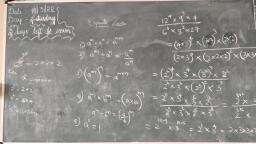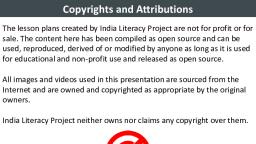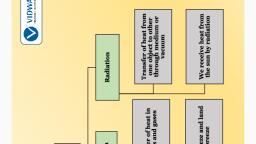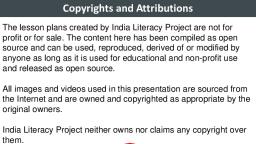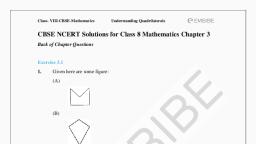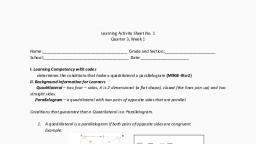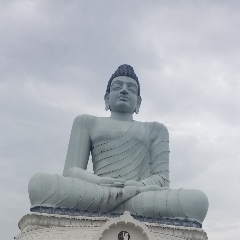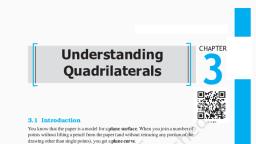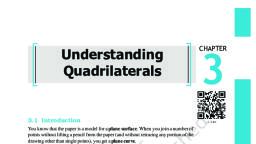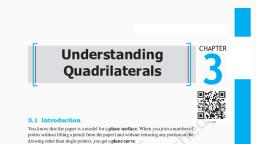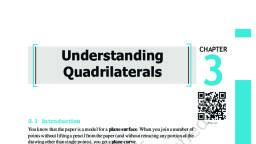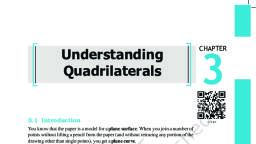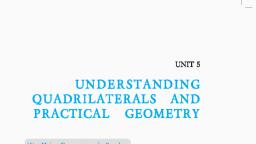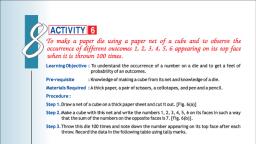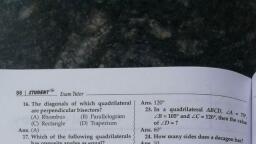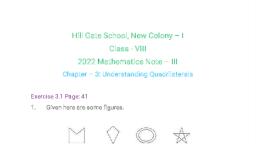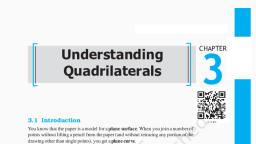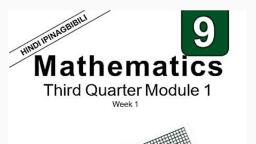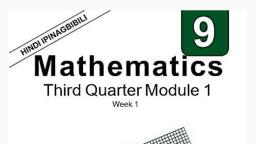Page 1 :
Copyrights and Attributions, The lesson plans created by India Literacy Project are not for profit or for, sale. The content here has been compiled as open source and can be, used, reproduced, derived of or modified by anyone as long as it is used, for educational and non-profit use and released as open source., All images and videos used in this presentation are sourced from the, Internet and are owned and copyrighted as appropriate by the original, owners., India Literacy Project neither owns nor claims any copyright over them., , ಉಚಿತ ವಿತರಣೆ, , Free Distribution, India Literacy Project
Page 2 :
For Teachers, • ILP, a voluntary organization, has prepared this digital resource for free delivery., • Its objectives are:, , o To enable Smart Class in school., o To provide digital resource to school students to help understand the concept in addition to a text, book., o Teachers and children gain multi-dimensional learning experience., • Its features are:, o This digital resource reinforces the concepts given in the textbook., o Using this digital resource in conjunction with a representative teaching method (Blackboard,, Experiments, Activities, and Others) will help you transform your classroom into a smart class., o PPT is a textbook application. When using this PPT, children should have a textbook, notebook and pen, ready., o 2-5 minute videos are used to interpret concepts to complement learning., o This content can be changed to support learning., o Teachers can use this digital tool to their advantage., o The ILP Science Experiment Kit can be used if you have one., o Teachers/ students can feel free to give their suggestions to improve these lesson plans., • India Literacy Project - email: info@ilpnet.org
Page 3 :
Class: 8, , Chapter: 03, , Subject: Mathematics, , Understanding Quadrilaterals
Page 5 :
Introduction, , You know that the paper is a model for a plane surface., , When you join a number of points without lifting a pencil from the, paper, you get a plane curve.
Page 6 :
Shapes, In everyday life we see many objects, books, balls, ice-cream, cones, etc. that have different shapes around us.
Page 7 :
Activity:, , List the shapes you see in your daily routine.
Page 8 :
Activity - Name the Shapes:, , (1), , (a) Cuboid, , (d) Sphere, , (4), , (2), , (b) Columns, , (e) Pyramid, , (5), , (3), , (c) Cube, , (f) Cone, , (6)
Page 9 :
Activity:, Match two dimensional images with their names., , (a), , (b), , (e), , (c), , (d), , Circle, Rectangle, Square, Triangle, Quadrilateral
Page 10 :
Match the following:, Figure, , Type, (a) Simple closed curve, , (b) A closed curve that is not simple, , (c) Simple curve that is not closed, , (d) Not a simple curve
Page 11 :
Polygons, A simple closed curve made up of only line segments is called a, polygon., , Curves that are polygons., , Curves that are not polygons.
Page 12 :
Activity - Identify Polygons and Non-polygons:, Polygon, , Polygon, , Polygon, Non-polygon, , Polygon, Non-polygon, , Polygon, Polygon, , Non-polygon, , Non-polygon
Page 13 :
Activity:, Try to give a few more examples and non-examples for a polygon., , Draw a rough figure of a polygon and identify its sides and, vertices.
Page 14 :
Classification of Polygons, We classify polygons according to the number of sides (or vertices) they, have., Number of sides or Classification, Vertices, Sample, 3, , Triangle, , 4, , Quadrilateral, , 5, , Pentagon, , 6, , Hexagon, , Figure
Page 15 :
Classification of Polygons, Number of sides or Classification, Vertices, Sample, , 7, , Heptagon, , 8, , Decagon, , 9, , Nonagon, , 10, , Octagon, , 𝑛, , 𝑛 sides, , Figure
Page 16 :
Diagonals, A diagonal is a line segment connecting two non-consecutive, vertices of a polygon., , S, , R, , P, , Q, Diagonals: PR and SQ
Page 17 :
Diagonals, A diagonal is a line segment connecting two non-consecutive, vertices of a polygon., W, , K, Figure 4.1, , V, , X, M, L, Z, , Y, , Diagonals: XV, XY, ZW, WY, YV, , N, , Diagonals: PR and SQ
Page 18 :
Diagonals, Is 𝑃𝑄 a diagonal? What about 𝐿𝑁?, Figure 4.1, , K, S, , R, , P, , Q, , L, , N, , You know what we mean by interior and exterior of a closed curve
Page 20 :
Interior and Exterior of A Closed Curve, , Interior, , Exterior, Figure 4.1
Page 21 :
Discuss, , The interior has a, boundary. Does the, exterior have a, boundary? Discuss, with your friends
Page 22 :
Convex and Concave Polygons, Here are some convex polygons and some concave polygons., , Convex Polygons, , Concave Polygons, Figure 4.3
Page 24 :
Regular and Irregular Polygons, A regular polygon is both ‘equiangular’ and ‘equilateral’., , Example: A square has sides of equal length and angles of equal, measure.
Page 26 :
Think…, Is a rectangle a regular polygon? Is an equilateral triangle a, regular polygon? Why?
Page 27 :
Angle Sum Property, Do you remember the angle-sum property of a triangle?, The sum of the measures of the three angles of a triangle is 180°., , K, , K + L + N = 180°, , L, , N
Page 29 :
Do This:, 1. Take any quadrilateral, say ABCD (Fig 4.4). Divide it into two, triangles, by drawing a diagonal. You get six angles 1, 2, 3, 4, 5, and 6., Use the angle-sum property of a triangle and argue how the, sum of the measures of ∠A, ∠B, ∠C and ∠D amounts to 180° +, 180° = 360°., , Figure 4.4
Page 30 :
Do This:, 2. Take four congruent card-board copies of any quadrilateral ABCD,, with angles as shown [Fig 4.5 (i)]. Arrange the copies as shown in the, figure, where angles ∠1, ∠2, ∠3, ∠4 meet at a point [Fig 4.5 (ii)]., , Figure 4.5, , What can you say about the sum of the angles ∠1, ∠2, ∠3 and ∠4?, [Note: We denote the angles by ∠1, ∠2, ∠3, etc., and their respective, measures by m ∠1, 𝑚 ∠2, 𝑚 ∠3, etc.], The sum of the measures of the four angles of a quadrilateral, is___________., You may arrive at this result in several other ways also.
Page 32 :
Do This:, 4. These quadrilaterals were convex. What would happen if the, quadrilateral is not convex? Consider quadrilateral ABCD. Split, it into two triangles and find the sum of the interior angles (Fig, 4.7)., , Figure 4.7
Page 33 :
Sum of the Measures of the Exterior Angles of a Polygon, The sum of the measures of the external angles of any polygon is, 360°., , Figure 4.8, , 𝑚 ∠1 + 𝑚 ∠2 + 𝑚 ∠3 + 𝑚 ∠4 + 𝑚 ∠5 = 360°
Page 34 :
Example 1:, Find measure 𝑥 in fig. 4.9., , Figure 4.9, , Solution:, 𝑥 + 90° + 50° + 110° = 360°, , 𝑥 + 250° = 360°, 𝑥 = 110°, , (Why?)
Page 35 :
Try These:, Take a regular hexagon Fig 4.10., 1. What is the sum of the measures of its exterior angles 𝑥, 𝑦, 𝑧,, p, 𝑞, 𝑟?, 2. Is 𝑥 = 𝑦 = 𝑧 = 𝑝 = 𝑞 = 𝑟? Why?, 3. What is the measure of each?, , (i) exterior angle, , (ii) interior angle, , 4. Repeat this activity for the cases of, (i) a regular octagon, , (ii) a regular 20-gon, , Figure 4.10
Page 36 :
Example 2:, Find the number of sides of a regular polygon whose each exterior, angle has a measure of 45°., Solution:, Total measure of all exterior angles = 360°, Measure of each exterior angle = 45°, , Therefore, the number of exterior angles =, The polygon has 8 sides., , 360, 45, , =8
Page 37 :
Exercise 3.2:, Find 𝑥 in the following figures., , (a), , (b)
Page 38 :
Exercise 3.2:, Find 𝑥 in the following figures., 1. Find the measure of each exterior angle of a regular polygon of, (i) 9 sides, , (ii) 15 sides, , 2. How many sides does a regular polygon have if the measure of, an exterior angle is 24°?, , 3. How many sides does a regular polygon have if each of its, interior angles is 165°?
Page 39 :
Kinds of Quadrilaterals, Based on the nature of the sides or angles of a quadrilateral, it, gets special names., , 1. Trapezium, Trapezium is a quadrilateral with a pair of parallel sides., , These are trapeziums., , These are not trapeziums.
Page 40 :
Kite, Kite is a special type of a quadrilateral. The sides with the same, markings in each figure are equal. For example AB = AD and BC =, CD., , These are kites., , These are not kites., , Study these figures and try to describe what a kite is. Observe that, (i) A kite has 4 sides (It is a quadrilateral)., (ii) There are exactly two distinct consecutive pairs of sides of equal, length., Check whether a square is a kite.
Page 41 :
Parallelogram, A parallelogram is a quadrilateral. As the name suggests, it has, something to do with parallel lines., , These are parallelograms.
Page 42 :
Kinds of Quadrilaterals, , These are not parallelograms.
Page 43 :
Discuss, Discuss whether, a rectangle is, also a, parallelogram., , A parallelogram is a quadrilateral whose opposite sides are, parallel.
Page 44 :
Elements of a Parallelogram, There are four sides and four angles in a parallelogram. Some of these, are equal. There are some terms associated with these elements that, you need to remember. Given a parallelogram ABCD (Fig 4.18)., , A, , D, , B, , C, Figure 4.18, , ✓ 𝐴𝐵 and 𝐷𝐶 are opposite sides., , ✓ 𝐴𝐷 and 𝐵𝐶 form another pair of opposite sides., ✓ ∠A and ∠C are a pair of opposite angles, ✓ ∠B and ∠D are a pair of opposite angles
Page 45 :
Elements of a Parallelogram, There are four sides and four angles in a parallelogram., , A, , D, , B, , C, Property:, The opposite sides of a parallelogram are of equal length.
Page 46 :
Try These:, Take two identical set squares with angles 30° – 60° – 90° and, place them adjacently to form a parallelogram as shown in Fig, 4.20. Does this help you to verify the above property?, , Figure 4.20
Page 47 :
Elements of a Parallelogram, You can further strengthen this idea through a logical argument also., Consider a parallelogram ABCD (Fig 4.21)., , Draw any one diagonal, say AC., Looking at the angles, ∠1 = ∠2 and ∠3 = ∠4 (Why?), Since in triangles ABC and ADC, ∠1 = ∠2, ∠3 = ∠4, , and 𝐴𝐶 is common, so, by ASA congruency condition,, ∆ABC ≅ ∆CDA (How is ASA used here?), This gives AB = DC and BC = AD.
Page 48 :
Example 3:, Find the perimeter of the parallelogram PQRS (Fig. 4.22), , Solution:, In a parallelogram, the opposite sides, have same length., , Therefore,, So,, , PQ = SR = 12 cm and QR = PS = 7 cm, , Perimeter = PQ + QR + RS + SP, , = 12 cm + 7 cm + 12 cm + 7 cm = 38 cm, Perimeter = 38 cm
Page 49 :
Do This:, Let ABCD be a parallelogram (Fig 4.23). Copy it on a tracing sheet., Name this copy as A’B’C’D’. Place A’B’C’D’ on ABCD. Pin them, together at the point where the diagonals meet. Rotate the, transparent sheet by 180°. The parallelograms still coincide; but, you now find A’ lying exactly on C and vice-versa; similarly B’ lies, on D and vice-versa., , Figure 4.23
Page 50 :
Angles of a Parallelogram, Does this tell you anything about the measures of the angles A and, C? Examine the same for angles B and D. State your findings., , Property: The opposite angles of a parallelogram are of equal, measure., Try These:, Take two identical 30° – 60° – 90° set-squares and form a, parallelogram as before., Does the figure obtained help you to confirm the above property?
Page 51 :
Angles of a Parallelogram, You can further justify this idea through logical arguments., If AC and BD are the diagonals of the parallelogram, (Fig 4.24) you, find that ∠1 = ∠2 and ∠3 = ∠4 (Why?), , Figure 4.24, , Studying ∆ABC and ∆ADC (Fig 4.25) separately, will help you to, see that by ASA congruency condition,, ∆ABC ≅∆CDA, , (How?)
Page 52 :
Angles of a Parallelogram, Figure 4.25, , This shows that ∠B and ∠D have same measure., In the same way you can get 𝑚∠A = 𝑚∠C., Alternatively, ∠1 = ∠2 and ∠3 = ∠4, we have, 𝑚∠A = ∠1+∠4 =, ∠2+∠C 𝑚∠C
Page 53 :
Example 4:, In Fig. 4.26, BEST is a parallelogram. Find the values 𝑥, 𝑦 and 𝑧., , Solution:, S is opposite to B., So, 𝑥 = 100° (opposite angles property), , 𝑦 = 100° (measure of angle corresponding to, ∠𝑥), 𝑧 = 80° (since ∠𝑦, ∠𝑧 is a linear pair), , Property: The adjacent angles in a parallelogram are, supplementary., , Figure 4.26
Page 54 :
Diagonals of a Parallelogram, We now turn our attention to adjacent angles of a parallelogram., In parallelogram ABCD, (Fig 4.27)., , ∠A and ∠D are supplementary since DC ∥ AB and with transversal, DA, these two angles are interior opposite., , ∠A and ∠B are also supplementary. Can you say ‘why’?
Page 55 :
Diagonals of a Parallelogram, AD ∥ BC and BA is a transversal, making ∠A and ÐB interior, opposite. ∠A and ∠B are also supplementary. Can you, say ‘why’?, AD ∥ BC and BA is a transversal, making ∠A and ∠B interior, opposite., Identify two more pairs of supplementary angles from the figure., , Figure 4.27, , Property: The diagonals of a parallelogram bisect each other.
Page 56 :
Example 6:, HELP is a parallelogram. (Lengths are in cms). Given that OE = 4 and HL is, 5 more than PE? Find OH., , Solution:, If, , OE = 4 then OP also is 4, , So, , PE = 8, , Therefore, , HL = 8 + 5, HL = 13, , OH =, , 1, 2, , ×13 = 6.5 (cms), , Figure 4.31
Page 57 :
Think, Discuss and Write:, After showing 𝑚∠R = 𝑚∠N = 70°, can you find 𝑚∠I and 𝑚∠G by, any other method?
Page 59 :
Exercise 4.3:, 2. Consider the following parallelograms. Find the values of the, unknowns 𝑥, 𝑦, 𝑧., , (ii), , (i), , (iii), , (iv), , (v)
Page 60 :
Exercise 4.3:, 3. Can a quadrilateral ABCD be a parallelogram if (i) ∠D + ∠B = 180°?, (ii) AB = DC = 8 cm, AD = 4 cm and BC = 4.4 cm? (iii) ∠A = 70° and ∠C, = 65°?, 4. Draw a rough figure of a quadrilateral that is not a parallelogram but, has exactly two opposite angles of equal measure., 5. The measures of two adjacent angles of a parallelogram are in the, ratio 3 : 2. Find the measure of each of the angles of the, parallelogram., 6. Two adjacent angles of a parallelogram have equal measure. Find, the measure of each of the angles of the parallelogram. The, adjacent figure HOPE is a parallelogram. Find the angle measures 𝑥,, 𝑦 and 𝑧. State the properties you use to find them.
Page 61 :
Some Special Parallelograms, 1. Rhombus, , Kite-cut, When you cut along ABC and, opened up, you got a kite., Here lengths AB and BC were, different., , Rhombus-cut, If you draw AB = BC, then, the kite you obtain is, called a rhombus.
Page 62 :
Rhombus, ▪ Note that the sides of rhombus are all of same length; this is, not the case with the kite., , ▪ A rhombus is a quadrilateral with sides of equal length., ▪ Since the opposite sides of a rhombus have the same length, it, is also a parallelogram., , ▪ So, a rhombus has all the properties of a parallelogram and, also that of a kite. Try to list them out., ▪ You can then verify your list with the check list summarised in, the book elsewhere., ▪ The most useful property of a rhombus is that of its diagonals.
Page 63 :
Rhombus, , Kite, , Rhombus, , Property: The diagonals of a rhombus are perpendicular bisectors of one, another
Page 64 :
Rhombus, Here is an outline justifying this property using logical steps. ABCD is a, rhombus (Fig 4.35). Therefore it is a parallelogram too., Since diagonals bisect each other, OA = OC and OB = OD., We have to show that 𝑚∠AOD = 𝑚∠COD = 90°, It can be seen that by SSS congruency criterion, ∆AOD ≅ ∆COD, Therefore, 𝑚∠AOD = 𝑚∠COD, Since ∠AOD and ∠COD are a linear pair,, , Figure 4.35, , 𝑚∠AOD = 𝑚∠COD = 90°, Since AO = CO (Why?), ൦, AD = CD (Why?), OD = OD
Page 65 :
Example 7:, RICE is a rhombus. Find 𝑥, 𝑦, 𝑧. Justify your findings., Solution:, = OE 𝑦 = OR 𝑧 = side of the rhombus, = OI (diagonals bisect) = OC (diagonals bisect), = 13 (all sides are equal ), , =5, = 12, , Figure 4.36
Page 66 :
Some Special Parallelograms, 2. A Rectangle:, A rectangle is a parallelogram with equal angles (Fig 4.37)., , What is the full meaning of this definition? Discuss with your, friends., If the rectangle is to be equiangular, what could be the measure of, each angle?, Let the measure of each angle be 𝑥°., Then, , Therefore,, , 4𝑥° = 360° (Why)?, , 𝑥° = 90°, Figure 4.37
Page 67 :
A Rectangle, Thus each angle of a rectangle is a right angle., So, a rectangle is a parallelogram in which every angle is a right, angle., Being a parallelogram, the rectangle has opposite sides of equal, length and its diagonals bisect each other., , In a parallelogram, the diagonals can be of different lengths., (Check this); but surprisingly the rectangle (being a special case), has diagonals of equal length.
Page 68 :
A Rectangle, A, , B, , D, , C, AC = BD, , Property: The diagonals of a rectangle are of equal length.
Page 69 :
A Rectangle, This is easy to justify. If ABCD is a rectangle (Fig, 4.38), then looking at triangles ABC and ABD, separately [(Fig 4.39) and (Fig 4.40), respectively], we have ∆ABC ≅ ∆ABD, This is because AB = AB (Common), , Figure 4.38, , BC = AD (Why?), , 𝑚 ∠A = 𝑚 ∠B = 90° (Why?), The congruency follows by SAS criterion., Thus AC = BD, , Figure 4.39, , and in a rectangle the diagonals, besides, being equal in length bisect each other (Why?), Figure 4.40
Page 70 :
Example 8:, RENT is a rectangle (Fig 4.41). Its diagonals meet at O. Find 𝑥, if OR, = 2𝑥 + 4 and OT = 3𝑥 + 1., Solution:, OT is half of the diagonal TE,, , OR is half of the diagonal RN., Diagonals are equal here., So, their halves are also equal., , Therefore 3𝑥 + 1 = 2𝑥 + 4, or, , 𝑥=3, , (Why?), , Figure 4.41
Page 71 :
Some Special Parallelograms, 3. A Square, A square is a rectangle with equal sides., , This means a square has all the, properties of a rectangle with an, additional requirement that all the sides, have equal length., The square, like the rectangle, has, diagonals of equal length., In a rectangle, there is no requirement, for the diagonals to be perpendicular to, one another, (Check this)., , Figure 4.41
Page 72 :
A Square, BELT is a square, BE = EL = LT = TB, , ∠B, ∠E, ∠L, ∠T are right angles., BL = ET and BL⊥ET., OB = OL and OE = OT., , In a square the diagonals,, i., , bisect one another (square being a parallelogram), , ii. are of equal length (square being a rectangle) and, iii. are perpendicular to one another., Hence, we get the following property., Property: The diagonals of a square are perpendicular bisectors of, each other.
Page 73 :
A Square, We can justify this also by arguing logically:, ABCD is a square whose diagonals meet at O (Fig 4.43)., , OA = OC (Since the square is a parallelogram), By SSS congruency condition, we now see that, , ∆AOD ≅ ∆COD (How?), Therefore,, , m ∠AOD = m ∠COD, , These angles being a linear pair, each is right angle., , Figure 4.43
Page 74 :
Link Between Arithmetic and Geometry, Find the value of 𝑥 in the given equation., , Geometry, , Solution:, 𝑥 + 90° + 50° + 110° = 360°, 𝑥 + 250° = 30°, 𝑥 = 110°, , Arithmetic
Page 75 :
Exercise 4.4:, 1. State weather true or false:, i., , All rectangles are squares, , ii. All kites are rhombuses., iii. All rhombuses are parallelograms, , iv. All rhombuses are kites., v. All squares are rhombuses and also rectangles., vi. All parallelograms are trapeziums., vii. All squares are not parallelograms., viii. All squares are trapeziums.
Page 76 :
Exercise 4.4:, 2. Identify all the quadrilaterals that have., i., , four sides of equal length, , ii., , four right angles, , 3. Explain how a square is., i., , a quadrilateral, , ii. a parallelogram, , ii., , a rhombus, , iv. a rectangle, , 4. Name the quadrilaterals whose diagonals., i., , bisect each other, , ii., , are perpendicular bisectors of each other, , iii. are equal
Page 77 :
Summary
Page 78 :
Summary

